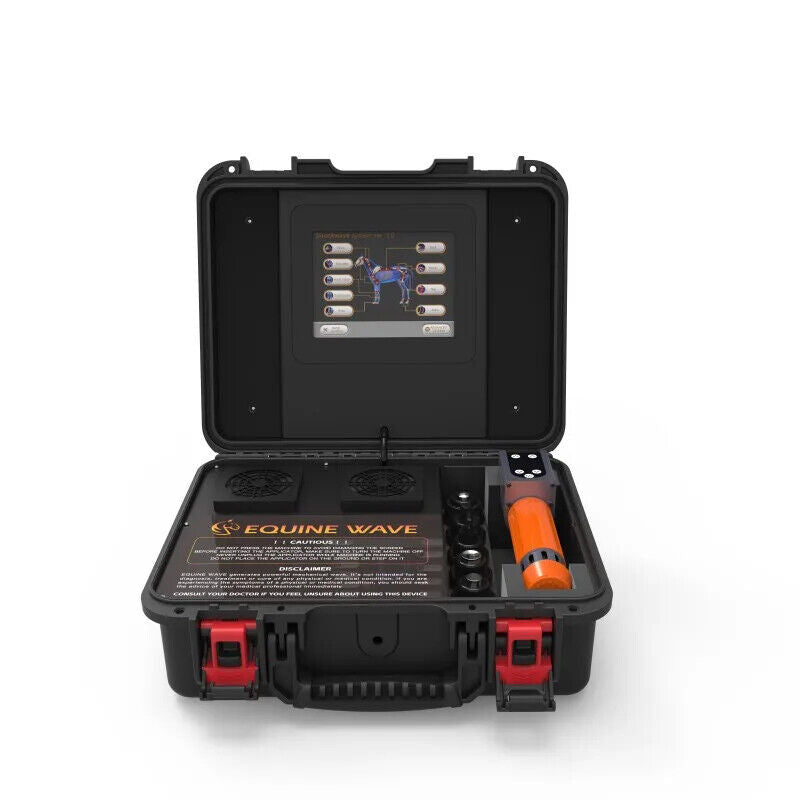
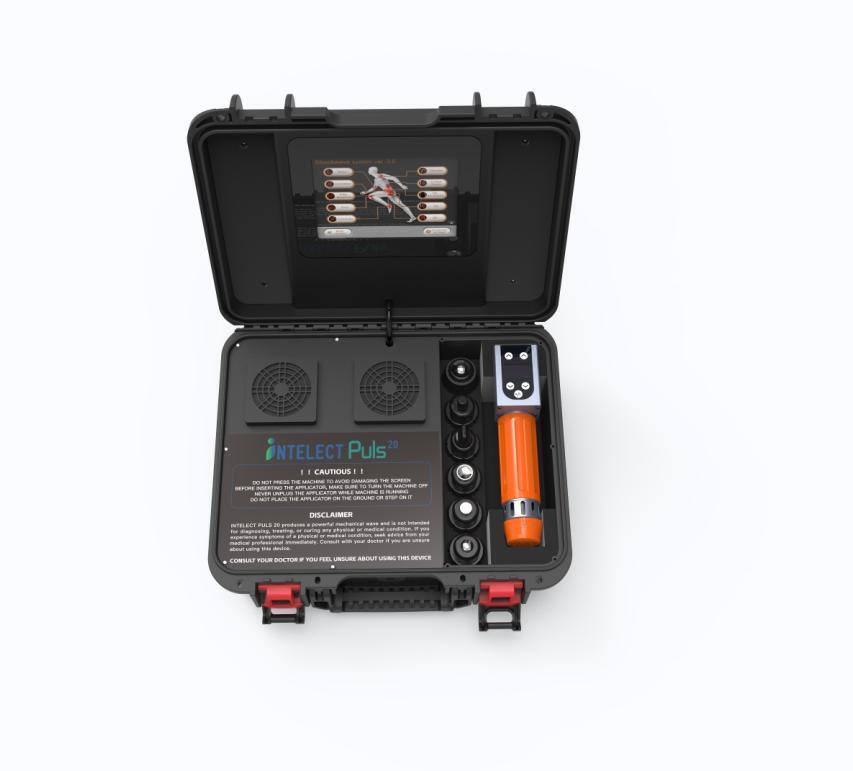
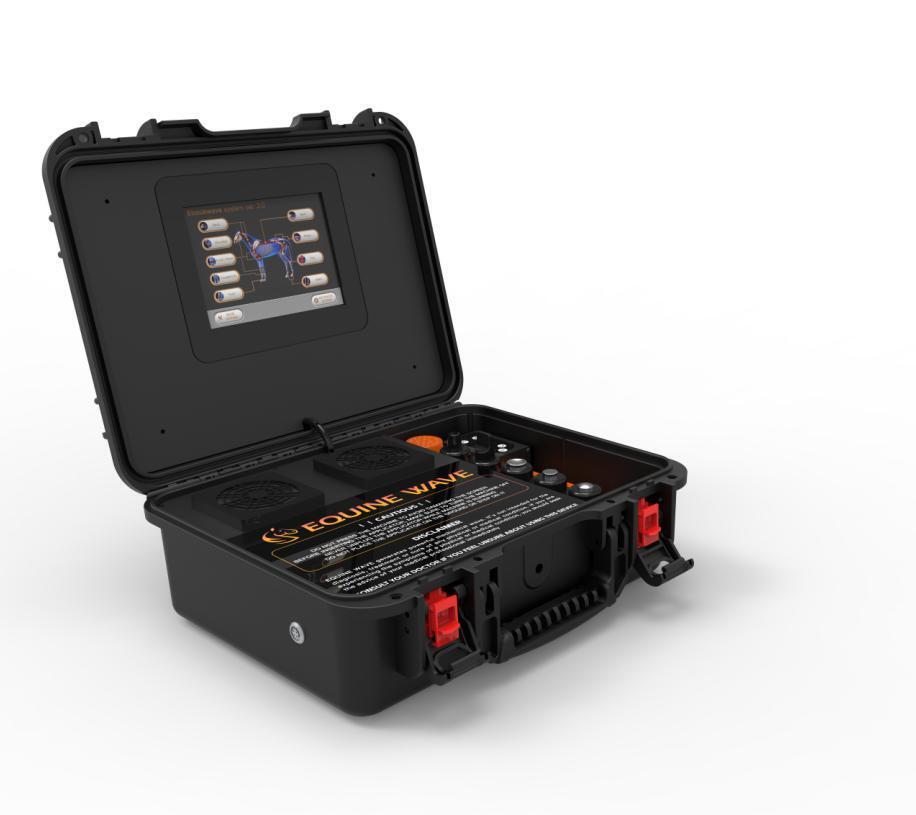
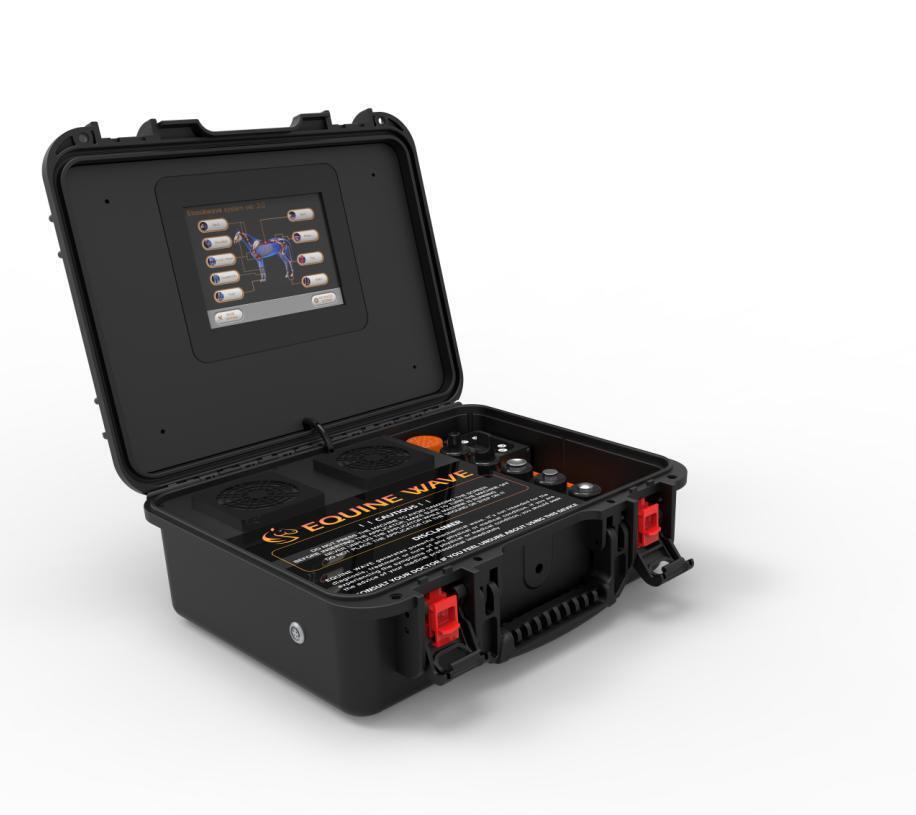
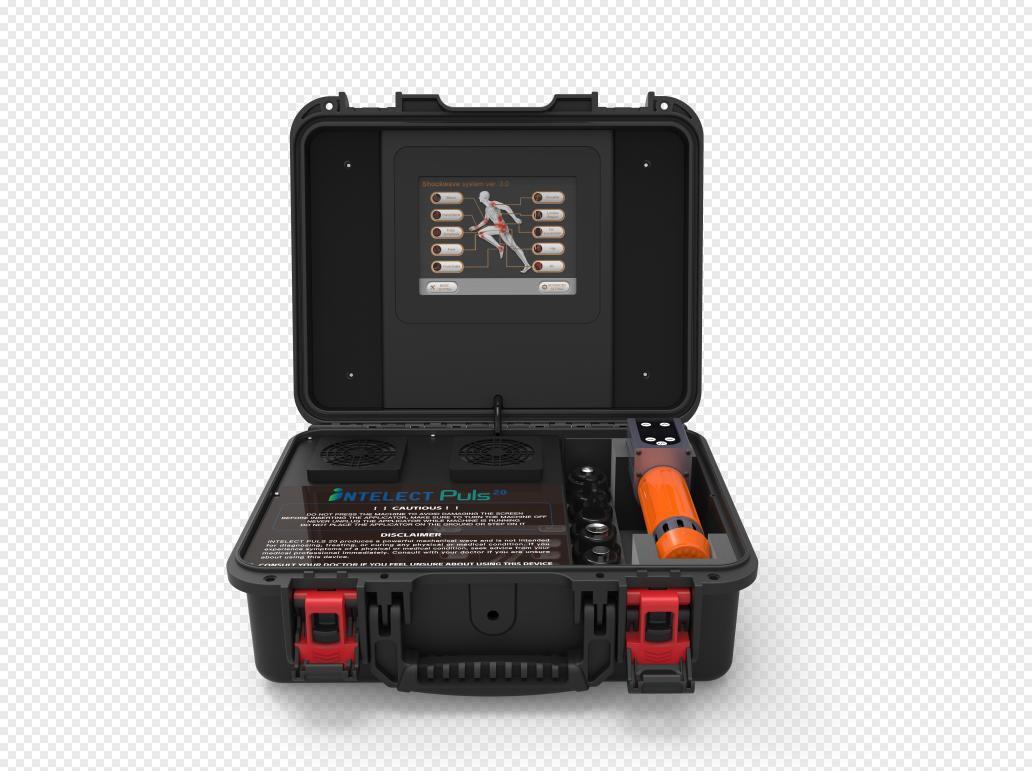
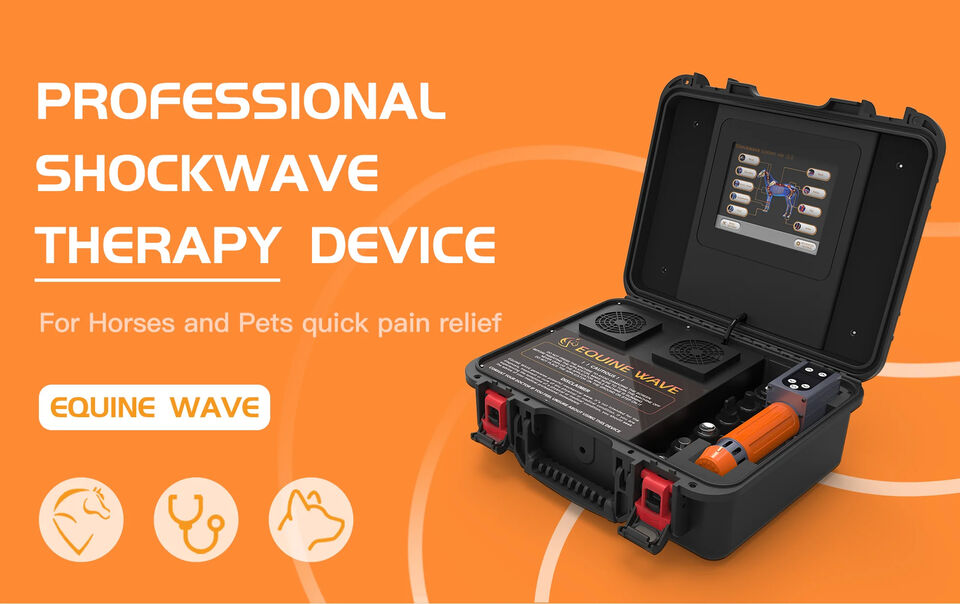
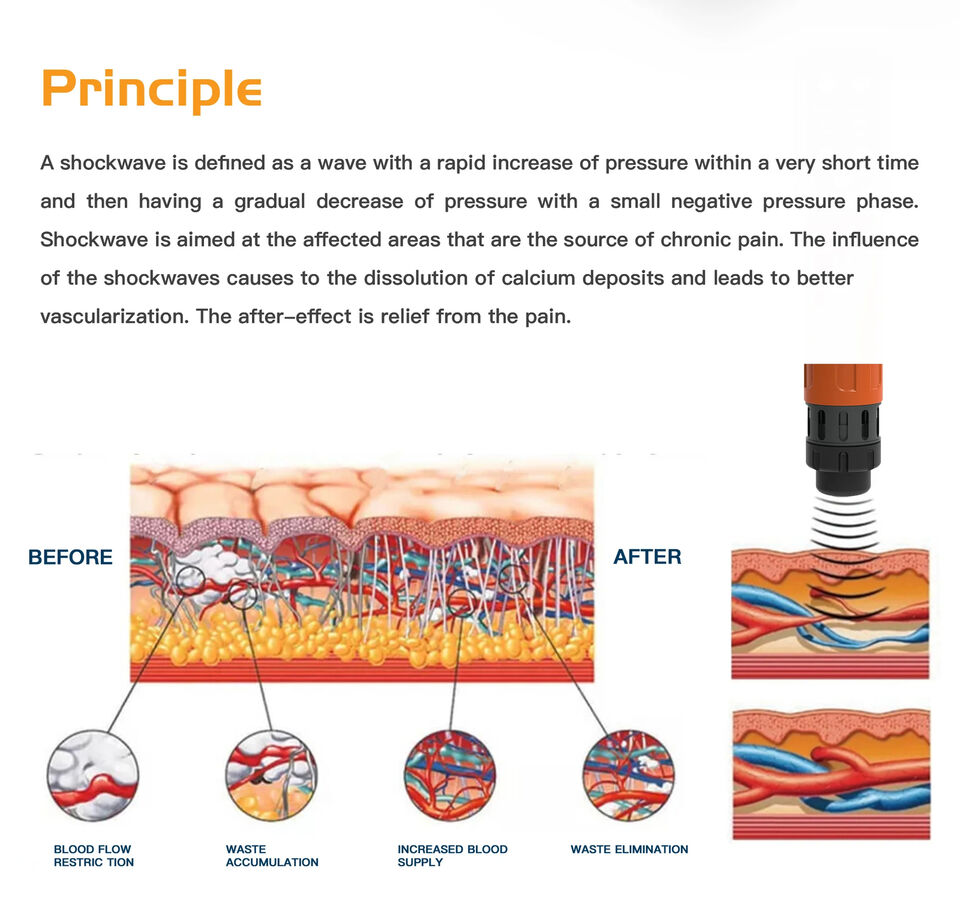
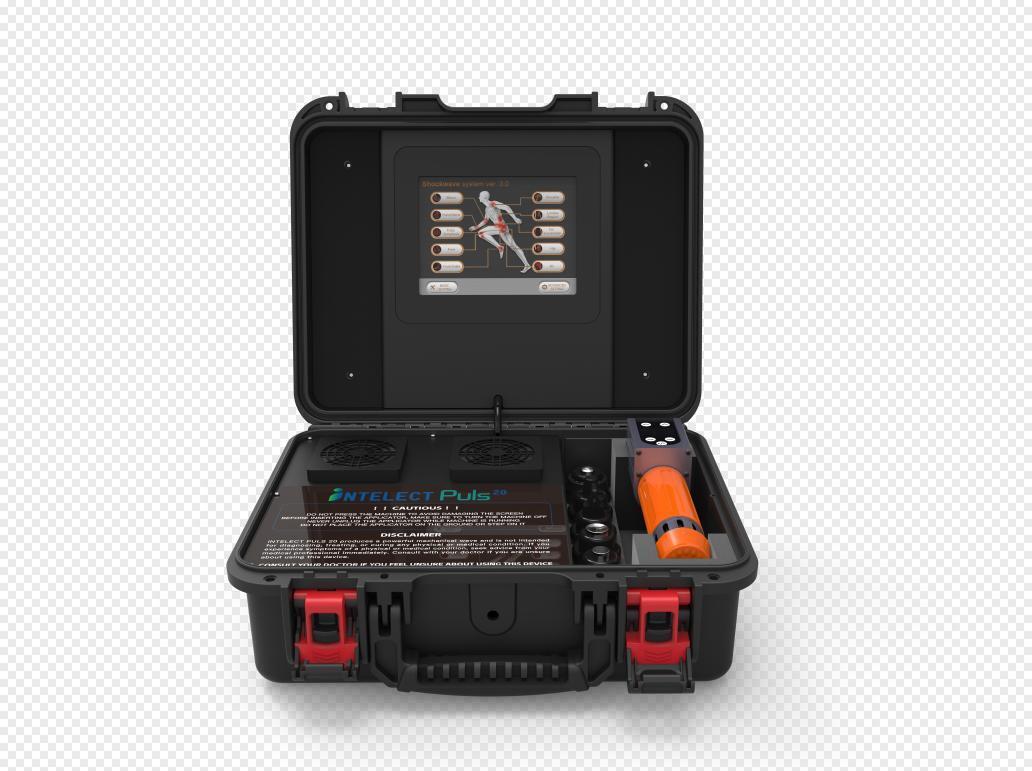
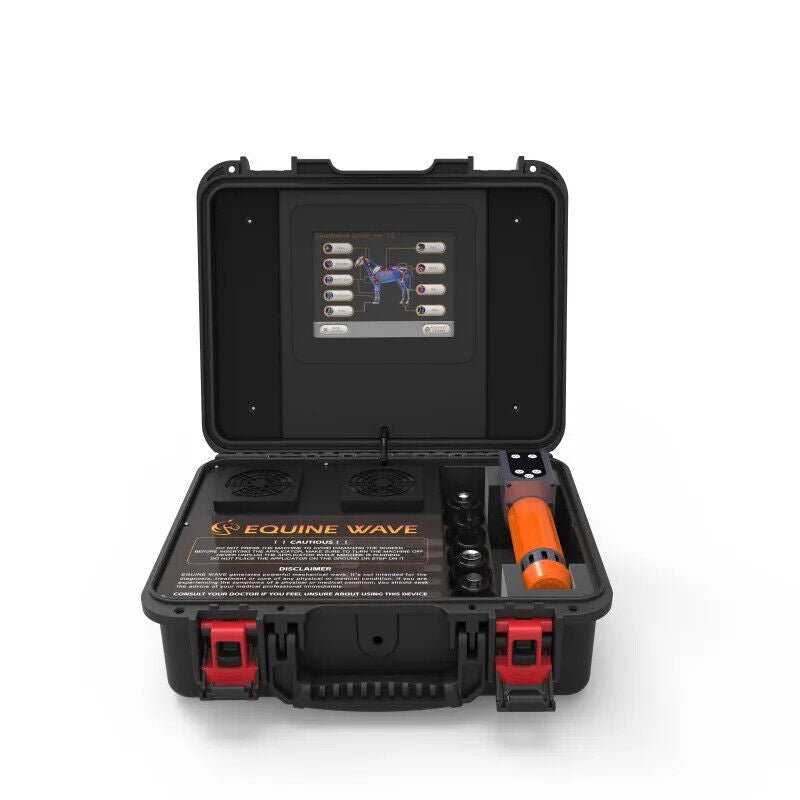
Equine Shock Wave Therapy Machine Animal Pet Physiotherapy Wounds HealingTherapy
30-Day satisfaction guarantee
Free worldwide shipping on order US$75+
12-Month warranty on devices

What Is ESWT Therapy?
Described as both safe and effective, ESWT involves applying shock waves to an
injured area of the body. Shock waves are intense but short energy pulses that
travel so quickly—a whopping 1,500 meters/ second—they literally break the sound barrier. This is the same event that occurs when airplanes break the speed of sound, except in a much smaller format. The “extracorporeal” part of the name simply
refers to the fact that the shock waves are generated outside the body.
A probe attached to a generator unit applies the shock waves directly to the injured region of the horse. Shock wave machines often have several probes capable of delivering shock waves to different tissue depths. This allows veterinarians to treat superficial injuries, such as wounds or lower limb tendons that are close to the
skin’s surface, as well as deeper injuries, such as to muscles or back joints.
Veterinarians can adjust various settings on the shock wave unit to tailor the therapy
to a horse’s individual needs. The three main settings vets must consider include:
-
Energy and focal area, which are frequently expressed in terms of energy per area (or energy flux
-
density, EFD) and measured in millijoules (mJ) per mm. Shock wave generators can vary significantly
-
in the amount of energy they produce and the size of area in which that energy is deposited.
-
Impulses are the number of shock waves delivered per session. Depending on the underlying
-
pathology, the impulses delivered can vary from 500 to several thousand.
-
Focus depth, as alluded to previously, indicates how deep the shock waves penetrate the horse’s
-
body. Standard depths range from 0 mm to approximately 110 mm. While practitioners have devised various treatment protocols— delineating not only energy, number of impulses, and focus but also number of treatments and days between treatments—these provide only general guidelines. Due to
-
the lack of science-based evidence supporting exact protocols, vets typically must modify ESWT schedules to fit each patient’s individual needs and therapy response

A shock wave is an acoustic (pressure) wave with very high amplitude and
rapid rise time. There are multiple ways to generate a shock wave. The
pressure wave can be instituted by vaporization of fluid across a spark gap (electrohydraulic), expansion of piezoelectric crystals (piezoelectric), or
pushing a membrane with opposite electrical current (electromagnetic). In
all three mechanisms, the pressure wave is brought to a focal point by lenses
or a parabolic reflector. This mechanism allows the energy in the wave to aim
at a specific point within the tissue.
There are differences between extracorporeal shock waves (ESWs)
and radial pressure waves (RPWs). Radial pressure waves are
created by a pneumatically driven device to strike the surface.
This creates a pressure wave, but the parameters of the wave are different, however they continue to be confused and incorrectly lumped together. The waveforms have different energy levels and different depths of penetration. It is important not to assume that
the results of using one wave form will be similar to the other. The discussion here will focus on ESWs.


The mechanisms by which ESWs provide a therapeutic outcome are minimally understood. A number
of results of the treatment have been identified. Neovascularization following ESW therapy has been
shown in tissues ranging from bone to myocardium. Up regulation of cytokines has been demonstrated
in a number of tissues and more recently shown through gene expressions. These findings are great
strides towards identifying the initiating mechanism which appears to be a cellular response to the
physical shock wave stimulating the cell.

How ESWT Benefits Horses
Extracorporeal shock wave therapy is widely used; however, its exact mechanisms of action remain
unknown. One theory is the shock waves impact cell-to-cell communication by altering the expression
of various molecules, such as growth factors and cytokines, to promote healing.³ To test this theory,
one research group created wounds in both forelimbs of horses. They treated one forelimb with ESWT
and left the other untreated. The researchers measured the levels of various genes involved in
wound-healing throughout the study.
A published review article¹ explained that ESWT impacts not only growth factors that result in healing
but also mediators that support blood vessel growth (angiogenic cytokines). It also increases the number
of bone-producing cells (osteoblasts); recruits stem cells to facilitate healing of various tissue types; and appears to provide pain relief.
Research to more definitively describe mechanisms of action to maximize a patient’s benefit from ESWT remains ongoing.

Important Considerations When Applying ESWT
Regardless of the horse’s injury, one of the most important predictors of outcome is an accurate diagnosis. Simply assuming a horse has a specific injury or condition and treating the area with ESWT
will unlikely lead to the optimal desired result, such as return to peak performance. Ongoing follow-up examinations to adjust the horse’s rehabilitation schedule will also help improve his outcome.
Preparing the affected site properly helps enhance the sound waves’ penetration of that area.When treating
navicular disease, for example, veterinarians recommend trimming the frog and wrapping the foot in a wet bandage overnight. This softens the frog and ultimately improves the sound waves’ penetration through the superficial tissues
to reach the deeper tissues where the navicular bone lies. Similarly, many horses receiving treatment for tendon,
ligament, and muscle pain might reap maximal benefit from ESWT if the site is clipped and cleaned prior to applying
the probe.
In many cases, horses require sedation during ESWT. And, as with other physical therapy/ rehabilitation modalities,
only trained professionals should apply ESWT.
Delivery
We offer free delivery for all US orders.
Shipping times for orders in the US:
- The 1st 20 units each month are guaranteed to be delivered within 1 - 7 business days.
- Generally delivered in 1 - 10 business days.
Rest of the world:
- The 1st 10 units each month are guaranteed to be delivered within 1 - 10 business days.
- Generally delivered in 1 - 15 business days.
Full shipping policy.
We offer a 30 day money back guarantee for all products, as well as a product quality guarantee & warranty for all machines.
Full refund policy.
Warranty
Komeyskin is committed to providing the best quality spa equipment. Whether it’s for your business or for yourself, you need your machines to perform effectively and reliably for years to come.
Warranty period for main machine: one year from date of delivery
Warranty period for spare parts: 1 year from date of delivery
Support after the warranty period: Rejuva Fresh will continue to provide free technical advice and parts at cost.
Read Full Warranty Policy
Request Technical Support
Customization
We offer logo customization for most of our professional beauty machines. You can have your brand logo added to the boot screen for free, and we charge a $50 fee to add your logo to the body of the machine.
To request logo customization, please include this product in the same order as your machine and email your logo file to sales@komeyskin.com with the subject: Logo Customization Request.
Preparing your customized machine will take 1-7 business days, depending on your requirements.
If you have any questions or want to check if your machine is eligible for logo customization, please contact us or use the chat function in the lower right corner of this website.
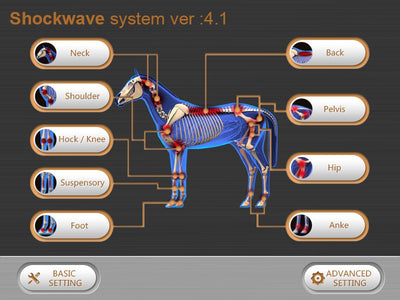

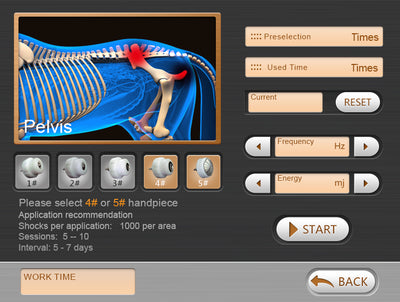
| Attribute | Value |
| Technology | ELECTROMAGNETIC SHOCKWAVE |
| Energy | 5~200mj |
| Frequency | 1~16Hz |
| Transmitters | 7 PCS |
| Touch Screen Size | 8 inch |
| Power | 200W |
| Voltage | AC 100~240V |
| Net Weight | 7.8 KG |
Choose options












